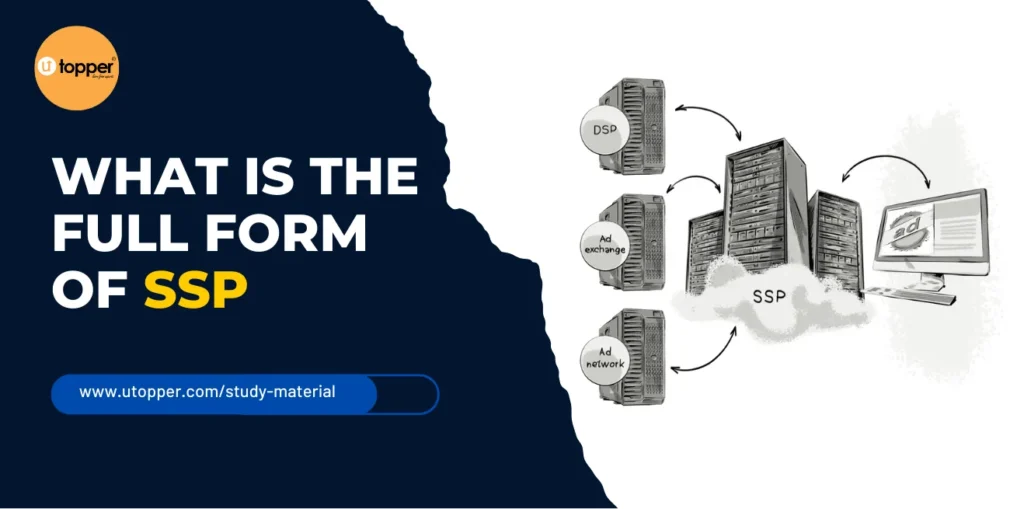SSP Full Form: What It Stands For and How It Works
SSP Full Form – As the world becomes more digitized, the advertising industry has also evolved. One of the key players in this space is SSP, which stands for Supply-Side Platform. In this article, we talk about what SSP are, SSP Full Form, how they work, and their significance in digital advertising.

Read Other Full Forms
What is an SSP?
A Supply-Side Platform (SSP) is a technology platform that publishers use to sell and manage their digital ad inventory. Simply put, an SSP is a tool that enables publishers to connect their ad inventory to a larger pool of advertisers, making it easier for them to monetize their content.
How does an SSP work?
SSPs function by creating a digital marketplace where publishers can auction their ad inventory to advertisers. When a user visits a publisher’s website, an SSP is used to collect information about the user, such as their location, browsing history, and device type. This information is then used to target the user with relevant ads. Advertisers bid on the ad space available on the publisher’s website, with the highest bidder winning the auction.
Types of SSP
There are two main types of SSPs: Open SSPs and Private SSPs. Open SSPs are open to anyone, while Private SSPs are exclusive to a select group of advertisers. Private SSPs are typically used by publishers who want to maintain more control over their ad inventory and pricing.
Advantages of using an SSP
- Increased revenue for publishers
- Improved targeting for advertisers
- Greater control over ad inventory and pricing for publishers
Disadvantages of using an SSP
- Ad fraud and brand safety concerns
- Lack of transparency in pricing and inventory
- Dependency on third-party technology
SSP vs DSP
While both SSPs and DSPs (Demand-Side Platforms) are essential tools for programmatic advertising, they serve different functions. SSPs are used by publishers to sell their ad inventory, while DSPs are used by advertisers to buy ad inventory. In other words, SSPs are focused on the supply side of the advertising equation, while DSPs are focused on the demand side.
Key players in the SSP industry
Some of the key players in the SSP industry include Google’s DoubleClick Ad Exchange, Rubicon Project, OpenX, and PubMatic.
Trends in the SSP industry
One of the key trends in the SSP industry is the move towards header bidding, which enables publishers to offer their ad inventory to multiple demand sources simultaneously, rather than sequentially. This can result in increased revenue for publishers and improved targeting for advertisers.
Challenges faced by the SSP industry
One of the main challenges facing the SSP industry is ad fraud, which can result in advertisers paying for fake impressions or clicks. Another challenge is the lack of transparency in pricing and inventory, which can make it difficult for publishers to determine the true value of their ad inventory.
Impact of SSP on digital advertising
SSPs have had a significant impact on digital advertising by enabling publishers to monetize their content more effectively and providing advertisers with more targeted advertising opportunities.
Future of SSP
The future of SSPs looks bright, as digital advertising continues to grow and evolve. One of the key areas of focus for SSPs is the development of more sophisticated algorithms and machine learning capabilities, which can enable more accurate and efficient targeting of users. Another area of focus is the integration of SSPs with other advertising technologies, such as DMPs (Data Management Platforms) and CMPs (Creative Management Platforms).
Conclusion
SSPs are an essential tool for publishers looking to monetize their digital content and for advertisers looking to reach their target audience more effectively. While there are challenges facing the SSP industry, such as ad fraud and lack of transparency, the benefits of using an SSP far outweigh the risks. As the digital advertising industry continues to grow, SSPs are likely to play an increasingly important role in connecting publishers and advertisers.
Frequently Asked Questions
Q.1 What is the difference between an SSP and an ad network?
While both SSPs and ad networks enable publishers to sell their ad inventory, there are some key differences between the two. Ad networks typically offer a fixed CPM (cost per thousand impressions) to publishers, while SSPs enable publishers to auction their ad inventory to a larger pool of advertisers, resulting in potentially higher revenue.
Q.2 How do SSPs prevent ad fraud?
SSPs use a variety of techniques to prevent ad fraud, such as monitoring for unusual traffic patterns, using fraud detection software, and implementing strict verification processes for advertisers.
Q.3 Can publishers use multiple SSPs?
Yes, publishers can use multiple SSPs to maximize their revenue and reach a larger pool of advertisers.
Q.4 What is header bidding?
Header bidding is a process that enables publishers to offer their ad inventory to multiple demand sources simultaneously, rather than sequentially. This can result in increased revenue for publishers and improved targeting for advertisers.
Q.5 Are SSPs only used for display advertising?
No, SSPs can be used for various types of digital advertising, including display, video, and mobile.

